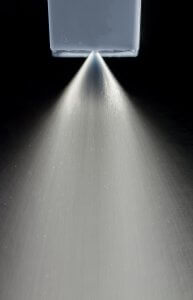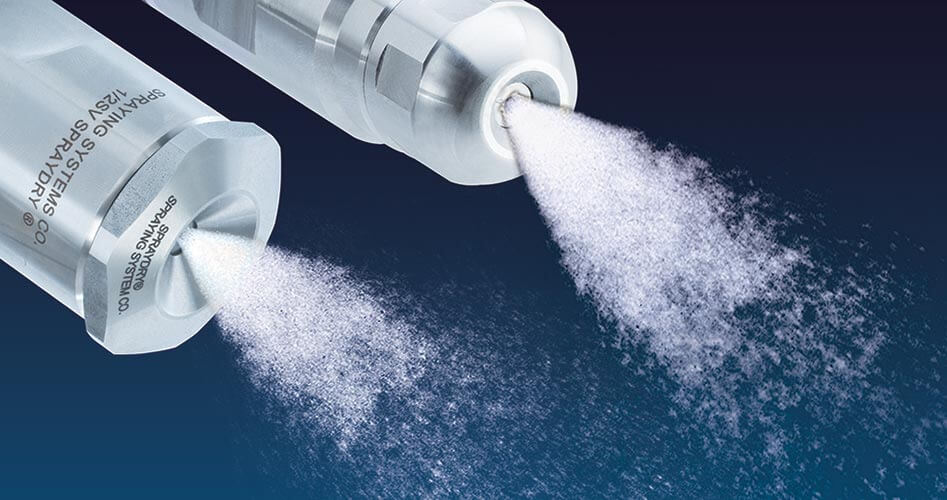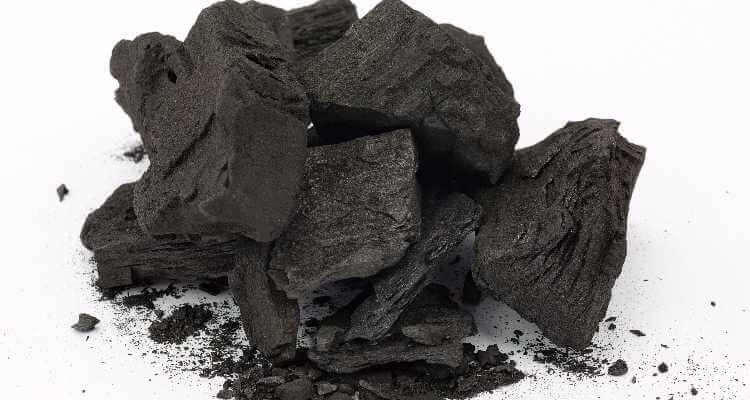There’s no denying that liquids are essential to our everyday lives. We use liquids as fuel, lubricants, solvents, coolants, and much more. Water—the most universal liquid—makes up nearly 60% of our bodies and over 70% of the Earth’s surface. That being said, there are plenty of times when a liquid simply won’t do.
Liquid products, compared to their solid counterparts, require larger packaging and take up more space in storage and on store shelves. Shipping liquids is inefficient, making the process of transportation more costly and wasteful. For these reasons and more, companies around the world are actively looking for a better alternative.
Enter spray drying.
What is spray drying and how does it work?

Spray drying is a method in which liquids or slurries are rapidly dried in order to create a fine dry powder. In a typical drying operation, the liquid feedstock is first pumped into the system’s atomizer, which typically consists of either a single fluid, two fluid, or rotary-atomizing nozzle. These spray nozzles are specifically designed to disperse the liquid slurry into the chamber of the dryer as controlled and consistent droplets.
The droplets start to dry in the chamber due to a combination of hot air and continually circulated air flow. By making the liquid droplets small enough and the dryer chamber large enough, the slurry is soon dried into its final particulate form. The powder is then collected from the main chamber, the cyclone, or the baghouse.
The resulting product is a free-flowing, granular powder. Some of the most commonly spray dried products are milk powder, yeast, flavorings, starch, and coffee.
The challenges
At AVEKA, we spray dry a wide variety of industrial materials, from ceramics and polymers to inorganic salts and surfactants. So, when one of our customers came to us and asked if we could spray dry a variety of high-purity chemicals – including a catalyst for use in a water purifying application – we were ready to take on the challenge.
Their current product was a liquid containing 10% solid particulate, so our solution was to remove the water through spray drying, resulting in a solid powder product. The customer communicated their ideal powder had to meet the following specifications:
1 . Easy for the customer to handle
2 . Uniform in formulation from particle to particle
3 . Achieve environmental sustainability goals
The AVEKA solutions
1. Ease of use
One of the problems of a powder-based product is that it can be more difficult for the end user to handle a fine material, especially one that can aerosolize quickly and become a possible respiratory hazard.
Our solution was to select packaging that would make it easier to handle the powder and limit the overall dust exposure. We proposed using a special drum that allowed the end user to add water to the packaging through a small port in the side. This way the material would wet out and the user could pour the slurry out of the container and use it the same way as they did with the previous liquid product.
2. Uniform formulation
Another major challenge to overcome was to make sure all five ingredients were incorporated into each individual dried particle. Being that this powdered product was being used in water purification at very minute amounts, it was important that every ingredient was present to properly treat the water.
Furthermore, the order of addition was important and needed to be researched, developed, and optimized. Some ingredients required heat to incorporate in water, some required high shear mixing, and still others required a pH adjustment.
AVEKA’s R&D and Production teams created a 5-stage blending assembly with mixing vessels for each addition. Pumps moved the slurry with raw ingredient #1 and water from the first vessel into the next vessel with raw ingredient #2 and water. This process continued until all five ingredients were in one vessel and ready to spray dry.
After the solution was spray dried at various test conditions, our Analytical Laboratory characterized the resulting powder. We scanned Electron Microscopy with Elemental Analysis Capability to determine which sample most effectively incorporated each raw ingredient in the particles. The AVEKA team selected the sample that had the fastest throughput to keep the end cost low for our customer.
3. Environmental sustainability
Our customer was looking for a way to redesign their product and packaging to become more eco-friendly. In its liquid form, the product required larger packaging, which in turn meant more volume being shipped. As we know, transportation can be very costly, both financially and environmentally.
By spray drying the liquid product into a powder, it allowed for the packaging of over 4x the amount of material than before. That, combined with the new environmentally friendly packaging, brought a huge boost to our client’s sustainability goals. After all this, we finally had a product that met the customer’s need to have a dry final product to ship around the county that was up to the standards of both AVEKA and the client.
Take your products to the next level
If your business is in need of spray drying or any other particle processing services, then look no further than the experts at AVEKA. From lab-scale samples to tanker truck quantities, we provide toll manufacturing and contract R&D for a wide variety of industries. Contact us today and we’ll work with you every step of the way to find an innovative and flexible solution to your custom powder processing needs.

